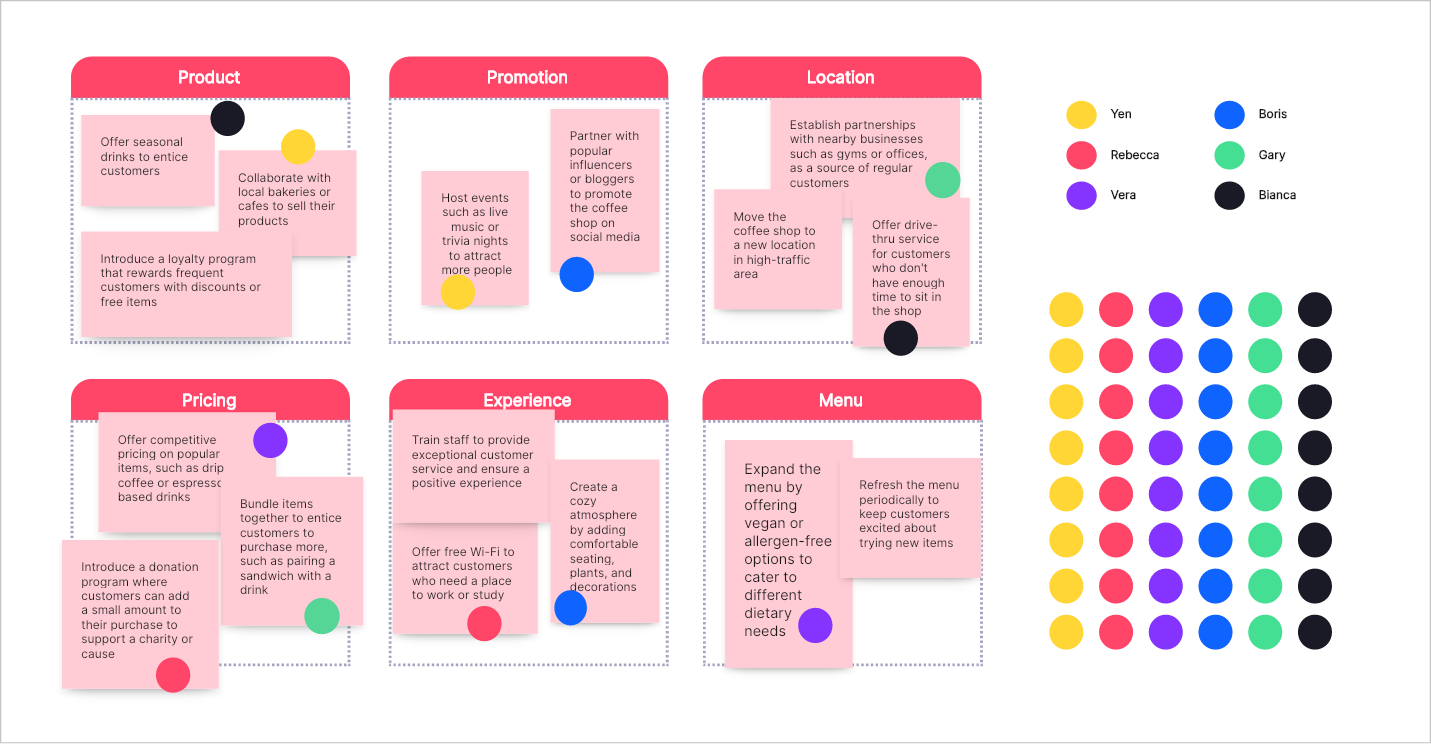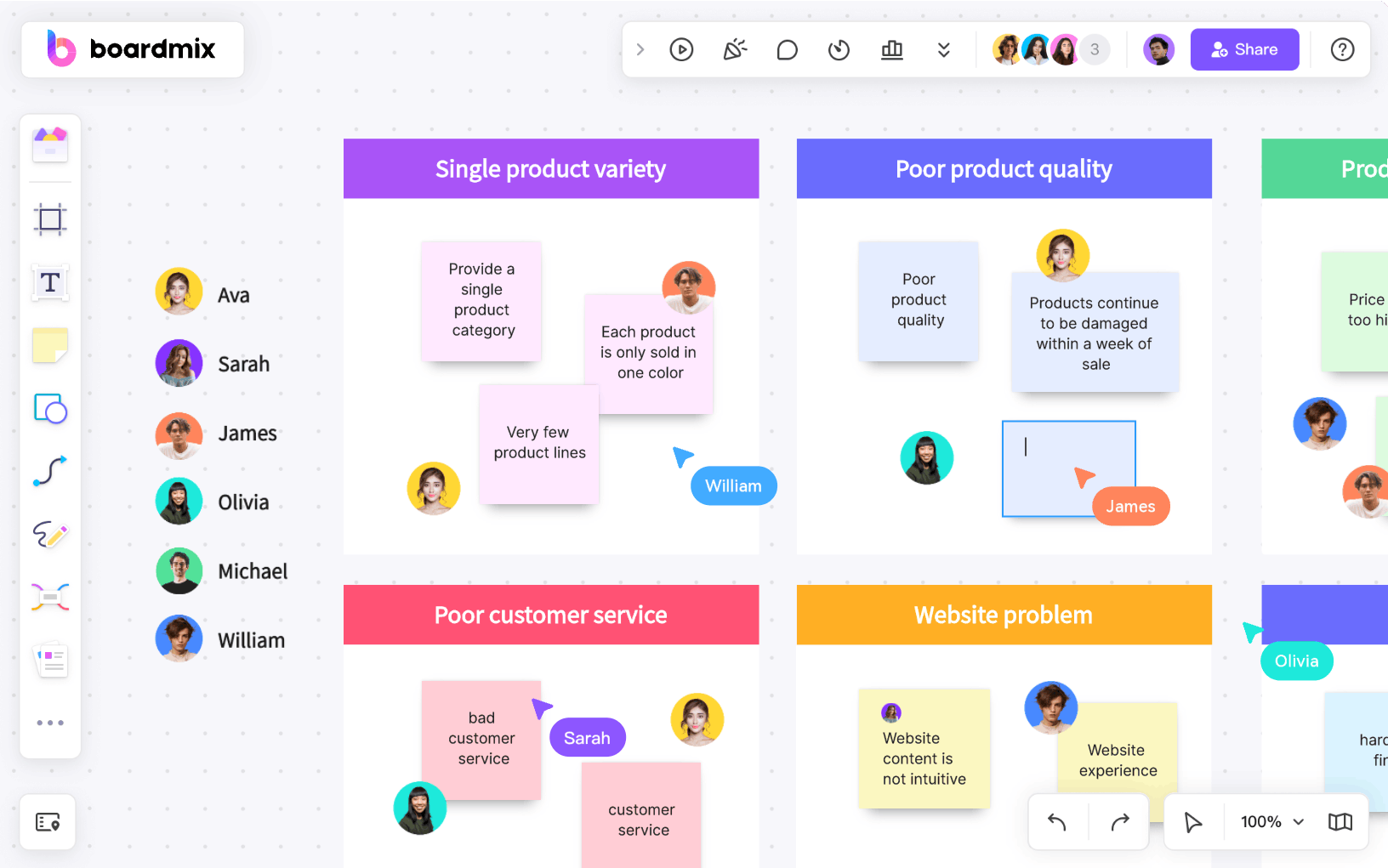In this article, we delve into the world of multivoting. From understanding the core concept to exploring real-world applications and how to conduct it, this guide offers an all-encompassing perspective on multivoting. Let’s dive in.
Dig into the Concept of Multivoting
Multivoting, also known as the N/3 method or nominal group technique, is a group decision-making process designed to reduce a large list of options to a smaller one. It promotes consensus by allowing each participant to vote on their preferred options.

The method usually involves several rounds of voting, each time eliminating less popular options. Multivoting ensures a democratic decision-making process, respects individual preferences and leads to group consensus.
Its use isn't limited to physical settings. In today's digital age, multivoting is implemented in online brainstorming sessions, webinars, polls and more.
Real-life Scenarios Using Multivoting
Here are a few examples that illustrate multivoting’s effectiveness in real-life scenarios:
- Project Prioritization: When working on projects, teams often have many tasks to complete but limited resources. Multivoting allows the team to prioritize tasks based on their significance and urgency.
- Community Decision-Making: Community organizations can use multivoting to decide on initiatives or activities. This ensures that community members feel included and that their preferences are considered.
- Business Strategy: Businesses can employ multivoting when deciding between multiple strategic initiatives. It can facilitate the process of narrowing down options to those that resonate most with stakeholders.
- Academic Group Assignments: Multivoting can also be useful in academic settings, like group assignments where students need to agree on a topic.
- Conference Topic Selection: Organizers of conferences or workshops often face challenges in deciding what topics to cover. Multivoting helps in listing out possible topics and selecting the most popular ones.
By fostering inclusivity and facilitating consensus, multivoting proves an effective tool for decision-making across various scenarios. As we continue embracing collaborative strategies, multivoting stands as a powerful method promoting democratic choices and shared responsibility.
Fundamentals of Multivoting
Multivoting is a decision-making technique used in diverse group settings, designed to filter a large list of options into a manageable few. It's a democratic process where each participant has an equal vote and voice. Understanding the fundamentals of multivoting is key to utilizing this tool effectively.
Here are the core principles of multivoting:
- Democracy: Multivoting is democratic. Every participant has an equal vote and an equal chance to voice their opinion. This principle ensures a fair and balanced approach to decision-making.
- Collaboration: Multivoting promotes collaboration. Each member of the group actively participates in generating options, casting votes, and finally reaching a consensus. This collaborative process strengthens team unity and ensures that all views are considered.
- Consensus Building: Multivoting encourages consensus building. By repeatedly voting and whittling down options, a consensus emerges that reflects the collective wisdom of the group.
- Efficiency: Multivoting is efficient. It helps a group quickly reduce a large list of options into a select few. This efficiency saves time and resources and allows the group to move forward with the decision-making process.
- Inclusivity: Multivoting fosters inclusivity. All group members, regardless of their role or status, are invited to participate equally in the process. This inclusivity ensures a diverse range of viewpoints is considered, leading to more balanced and well-rounded decisions.
These five fundamentals—democracy, collaboration, consensus building, efficiency, and inclusivity—define the multivoting process and ensure it is an effective tool for group decision-making.
Steps to Conduct an Effective Multivoting Session
Multivoting is an invaluable decision-making tool that facilitates the reduction of a long list of options to a prioritized few. Below are the steps on how to conduct an effective multivoting session.
- Generate Ideas: Kick-off the session with a brainstorming round. Ensure every participant has an equal opportunity to suggest ideas or options. Encourage diversity and quantity in idea generation at this stage.
- Compile a List of Ideas: Consolidate all ideas in a clear and visible format for all participants to see. A shared digital platform or a physical whiteboard can be useful for this purpose.
- Clarify Ideas: Discuss each idea briefly to ensure that all participants understand them. Clarity at this stage helps ensure informed decision-making during the voting process.
- Conduct Initial Voting: Allow participants to vote on their preferred options. This could be done by giving them a predetermined number of votes to distribute among the options as they see fit.
- Tally Votes and Eliminate Lowest Ranking Options: Count the votes for each idea and rank them accordingly. Remove the options with the fewest votes.
- Repeat Voting Process: Repeat steps 4 and 5 until only the most favored options remain. This step-wise reduction allows less popular ideas to fall away naturally, leading to consensus.
- Prioritize Based on Votes: Prioritize the remaining ideas based on the number of votes they received. The option with the most votes will top the list.
- Validate the Outcome: Ensure all participants are satisfied with the results. The goal is consensus, so if there are any lingering concerns, consider discussing them as a group.
By following these steps, your multivoting session can run smoothly and efficiently, leading to well-informed, democratic decisions that represent the consensus of your group.
A Versatile Multivoting Process Tool - Boardmix
In today's world of decision-making, the need for effective tools that facilitate streamlined processes has become more important than ever. Among these, Boardmix stands out as a versatile tool that supports the multivoting process. Let's dive into an exploration of what makes Boardmix an essential asset for groups aiming to reach democratic decisions through multivoting.

An Overview of Boardmix
Boardmix is a powerful online tool designed to assist groups in organizing, brainstorming, prioritizing, and ultimately deciding on the most viable options from a list of many. The platform's inherent versatility allows it to be used across various sectors - from business teams formulating strategic plans, community organizations settling on project proposals, to academic groups deciding on research topics.
Multivoting Process Simplified with Boardmix
Boardmix streamlines the multivoting process in several ways:
- User-Friendly Interface: With its intuitive interface, Boardmix makes it easy for users to navigate and participate in the voting process, regardless of their tech-savviness.
- Real-Time Collaboration: Boardmix's platform allows for real-time collaboration. Participants can add their ideas and cast their votes instantly, fostering a dynamic and interactive decision-making process.
- Efficient Tallying and Visualization: Boardmix automatically tallies the votes and presents them visually, making it easy to track which ideas are gaining traction.
- Transparency and Inclusivity: Every participant can see the progression of ideas from conception to final decision, encouraging an open, democratic process.
In conclusion, Boardmix has proven itself to be a valuable tool for groups committed to democratic, efficient decision-making. Its ability to streamline the multivoting process while offering other essential features demonstrates its versatility and relevance in today's collaborative settings.
Expert Tips for Ensuring a Smooth and Effective Multivoting Session
Multivoting is an excellent decision-making tool, but its efficacy depends largely on how it is executed. Here are some expert tips to ensure a smooth and effective multivoting session.
Establish Clear Guidelines
Before starting a multivoting session, ensure that all participants understand the process. Outline the guidelines for idea generation, voting, and decision-making. Clarify the objective of the session and how the outcomes will be used. This clarity will foster understanding and participation.
Foster Open Communication
Encourage all participants to openly share their ideas and opinions. An inclusive atmosphere promotes diversity in thought, which enriches the pool of options to be voted on. Also, ensure that everyone understands each idea before moving on to the voting phase.
Allocate Sufficient Time
Do not rush the multivoting process. Allocate enough time for idea generation, discussion, and multiple rounds of voting. Rushing through the steps can lead to suboptimal decisions.
Limit the Number of Votes
Each participant should have a limited number of votes. This encourages thoughtful selection of ideas during voting. Too many votes may dilute the results, making it harder to narrow down options.
Use a Facilitator
A facilitator can guide the session, ensuring that everyone follows the rules and respects time constraints. The facilitator can also moderate discussions, making sure all voices are heard.
Analyze Results Collectively
Once voting concludes and priorities have been set, review and analyze the results as a group. This collective analysis helps everyone understand why certain ideas gained more votes, ensuring alignment with the group's final decision.
Leverage Technology
Use digital tools for conducting the multivoting session. Online platforms like Boardmix provide interactive features that simplify idea sharing, voting, tallying, and result visualization.
By incorporating these expert tips, you can significantly improve the efficiency and effectiveness of your multivoting sessions, leading to more impactful decisions and heightened team engagement.








